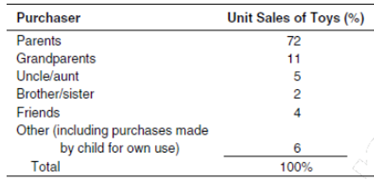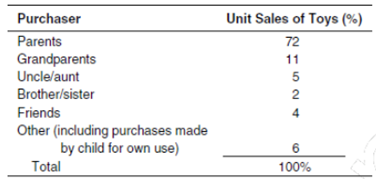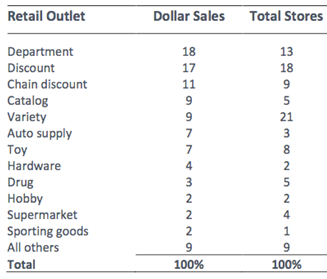Reference no: EM13498 , Length: 1800 Words
The case study of the Fisher-Price Toys, Inc., a popular case in basic economics and management from the prestigious Harvard Business School. The purpose of this case to help students understand how markets work, by studying consumer behaviour, demand, supply and pricing decisions. This case portraits a toy factory in the USA, intending to launch a new product. In order to succeed, managers have to analyse and decide on various important issues. Despite the case looking a bit out of date, the underlying issues and challenges faced then, are still very much valid in today's corporate environments. This case provides an excellent opportunity to identify and discuss the key economic and management issues at stake in a corporate environment.
Case study:
Fisher-Price Toys, Inc.
Over the past four decades Fisher-Price Toys, Inc., distinguished itself by producing a wide line of quality toys for preschool children at moderate prices. Jack s halter, Fisher-Price's marketing vice president, was therefore confronted with a difficult situation when his production staff announced in August 1970 that mould costs on the new ATV Explorer toy would make the intended $12 retail price impossible to meet. In fact, according to the production people, the ATV Explorer could not be profitably distributed at the wholesale level for less than $9.20 per unit, thus calling for an $18.50 retail price after mark-ups. While concept tests had promised a substantial demand for the new riding vehicle at the $12 price, Asthalter was unsure that these potential consumers would remain interested at the new price. Moreover, because the Fisher-Price product line was generally priced below $5 retail, Asthalter believed there would be considerable internal resistance to introducing the ATV Explorer.
Industry Background
Industry sources estimated that toy sales at the retail level in the United States were between two and three billion dollars in 19681 .A study by the A. J. Wood Corporation at that time divided total consumption as shown in Table A.
Table A Approximate Dollar Sales at Retail (%)
Riding toys (including bicycles) 22
Dolls, doll clothing and accessories 13
No riding transportation 12
Sporting goods 12
Games, puzzles, magic sets 6
Educational and scientific' 5
Musical 5
Toy guns 5
Handicraft and models 4
Novelty toys 3
Activity toys 3
Stuffed 2
Child-sized furniture 2
Preschool 2
All others 4
100%
Steven L. Diamond, research associate, prepared this case under the supervision of Assistant Professor Scott Ward to serve as the basis of class discussion rather than to illustrate either effective or ineffective handling of an administrative situation.
This section is based on "Note on the Toy Industry," University of Minnesota Graduate School of Business Administration, 1970.
Approximately one-sixth of the items purchased accounted for almost two-thirds of the total dollars spent on toys.
The A. J. Wood study also showed that parents account for the bulk of toy purchases.

The toy industry is composed of a few large firms and several hundred small manufacturers.
In 1967 there were over 1,000 U.S. toy manufacturers, but the 8 largest manufacturers together accounted for 35% of sales, and the 20 largest firms accounted for 58% of sales. Foreign manufacturers supplied only 9% of U.S. toy sales (at manufacturers' prices), but foreign imports were growing, particularly for less expensive toys.
The toy industry is highly seasonal in nature. At the retail level, 53% of all dollar sales and
45% of unit sales are made in November and December. In the late 1960s, toys were sold through approximately 10,000 retail outlets, distributed as shown in Table B.
Table B Distributions of Sales and Stores (%)

Toy retailing had become more concentrated in recent years, and industry sources expected this concentration of more sales through fewer outlets to continue. For example, the Census of
Business indicated that the number of hobby and toy and game shops had declined 18% between 1963 and 1967, although total sales of these shops increased by more than one-fourth. A Stanford
Research Institute study predicted that chain stores, particularly discount and variety chains, were likely to continue to be major vendors of toys.
In the mid-1960s two major discount chains opened stores that sold only toys. Both managements believed that their chains could do a specialized year-round business in toys because (1) year-round promotion by toy manufacturers and retailers could create a year-round demand; (2) the youth population (10 and under) was growing, with a 27% gain projected until the late 1970s; and (3) American affluence was increasing, with personal income increasing 72% between 1960 and 1968.
Toy industry observers break down the types of toys available into four categories:

1.Prestige items, most of which are European imports, offering high margins (40%-60% to retailers) with little advertising b t elaborate point-of-sale promotions.
2.Staple no discount toys, including basic items such as cay sets, doctor kits, and building blocks. Many "educational" toys fall into this category. Some advertising is done for these toys, but themes stress quality and are directed primarily toward women.
3.Semi discount items, including push-and-pull toys, riding toys, and games. Some national advertising is done but is essentially "awareness" promotion to keep the name of the product and the manufacturer in the mind of the consumer.
4.Extreme discount toys, including ad items and a few perennial favorites. Most imported toys from the Far East fall into this category; are sold through jobbers to discount, department, and toy stores; and offer low (less than 10%) margins.
Questions based on case study
Please, read the case study provided. Assume that you are in 1970 in the USA and have been hired as a business consultant to help the top management of Fisher-Price Toys, Inc. to decide on the launching of the ATV Explorer.
1. Should the company launch or not launch the ATV Explorer? Explain why.
2. What price tag would you recommend for that product and what kind of measures would you also recommend to take, in order to pursue that price? Would the new product with the recommended price be sustainable in the long-run?
3. By the early 70's you realised the market for toys in the US is about to change. What strategies would you recommend for the future (next 10 years) in terms of new products and prices in order to match supply with demand in a profitable manner?